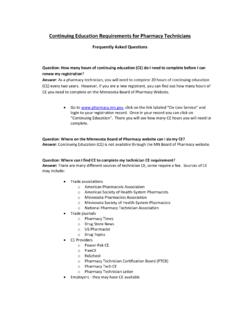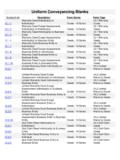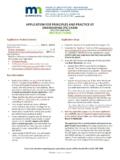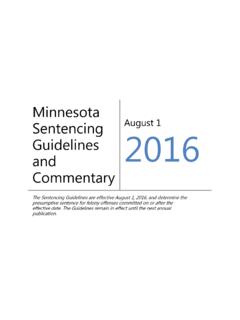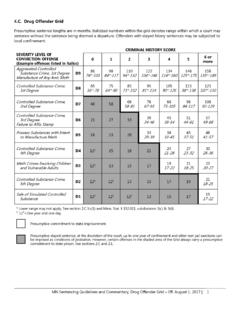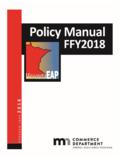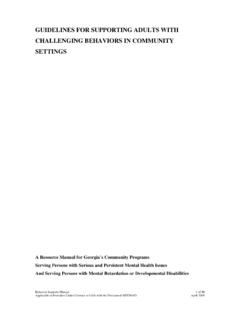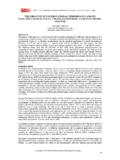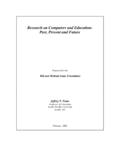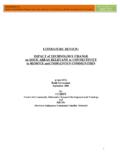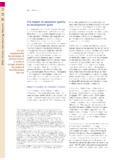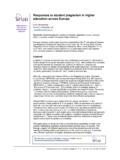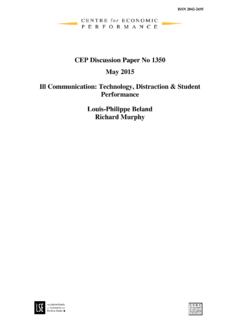Transcription of Issues in Special Education Caseload/Class Size Policy
1 Issues in Special Education Caseload/Class size Policy Report Summary The purpose of Issues in Special Education Caseload/Class size Policy is to provide a comprehensive overview of the broad range of Issues relating to the educational needs of students, and the current and future availability of staff to support those needs. Whether discussed as " class size ," "pupil-teacher ra-tio" or "teacher caseload " the topic is one that is increasingly gaining the attention of educators and policymakers, both nationally and in Minnesota. However, because of the various terms that are used to define "teacher availability," discussion of this issue is often prone to misinterpretation, misunder-standing, and occasionally, obfuscation. Issues in Special Education Caseload/Class size Policy repre-sents an effort to overcome this problem by providing an in-depth analysis that seeks to clarify key terms and Issues so that educators and policymakers alike can gain a thorough understanding of pres-ent conditions and possible courses of action to be taken in the future.
2 An understanding of the "defini-tional components" is critical to reviewing the summary findings contained in this report. Conventions used in Issues in Special Education Caseload/Class size Policy include: class size In general Education , " class size " is a ratio that compares the number of students to the number of teachers in a classroom. In some studies " class size " is re-ported as an average aggregated over a district or region, a factor that tends to com-plicate comparisons made with other studies that base class size at the school build-ing level. In the area of Special Education , " class size " generally refers to the number of students present in the class or resource room during a single teaching session. Pupil-teacher ratio A ratio that compares the number of students to the number of Education professionals available to serve students. Pupil-teacher ratios can include teachers, paraprofessionals, administrators and others in contact with students, com-pared to the total number of students.
3 caseload Typically defined as the number of students with Individual Education Plans (lEPs) for whom a teacher serves as "case manager" and is responsible for writing and implementing of the IEP. As indicated above, the definition of " class size " in the area of Special Education differs from that of " caseload ." To advance an objective analysis of pertinent Issues , Issues in Special Education Caseload/Class size Policy is based on an extensive review of educational research accumulated over the past several decades, along with an analysis of rules and polices that have been promulgated as a result of federal and state legislative initiatives. While the study is intended to focus on Issues that impact Special edu-cation, Issues in Special Education Caseload/Class size Policy also incorporates many of important findings from the large body of research that has been conducted in general Education programs that not only helps to support a framework for making some basic assumptions about student needs and teacher availability, but also as a means of contrasting differences that exist between workload Issues among Special Education and general Education teachers.
4 Key findings of Issues in Special Education Caseload/Class size Policy include: It is essential that educators and policymakers establish clear definitional rules of what factors constitute "caseloads" and " class size " prior to their deliberations about such is-sues. As indicated, research indicates that such terms as " class size ," "student-teacher ra-tio," and " caseload ," represents different ways of examining "teacher availability" and their interpretation will directly impact the types of decisions made about how educational serv-ices will be provided to youth with disabilities. Issues IN Special Education Caseload/Class size Policy REPORT SUMMARY 1 OCTOBER 17, 2000 In an extensive review of research conducted in the area of general Education , the con-vergence of findings indicates a positive relationship between lower class size and achievement. While conclusions differ regarding the relative impact of class size on achievement or establishing an "optimal" class size , most researchers generally agree that a positive relationship exists.
5 The results of studies that have used "pupil teacher ratio" as a unit measurement have been less clear regarding any such relationship. Nevertheless, the general findings of research conducted in the field of general Education have clear im-plications for Special Education "smalter is better." The few studies regarding the effects of class size in Special Education have shown that students with disabilities are likely to demonstrate gains when class size is smaller. Also, teachers and parents are likely to cite improved climate and learning conditions in the smaller classrooms. Based on their findings, some researchers have concluded that a class size of five to eight students would be considered "optimal." This number, however, will vary considering specific student needs. Essentially, Minnesota caseload legislation, which establishes limitations by disability on the numbers of students on lEPs that can be served by an individual teacher, has re-mained unchanged since 1991.
6 While Minnesota established specified caseload limits with the implementation of 94-142 in 1975, these have been extensively modified and in some cases, eliminated altogether. Despite recommendations from two state Special Education tasks forces to reinstate caseload limits for a level of service that represents the largest percentage of Special Education students in the state, decisions about caseload limits largely remains in the hands of Iocal districts. Even though caseload legislation has remained essentially the sains since 1991, the role of the Special Education teacher has changed dramatically. Additional federal require-ments to ensure increased student access to general Education programs, consideration of assistive technology, behavioral data collection procedures are just a lew examples of mandated responsibilities, that did not exist a decade ago. Similarly, increased workload responsibilities have been noted in such areas as "communication" [ , parents, general Education teachers and administrators), participation on teams, paperwork requirements, and supervising the work of paraprofessionals.]
7 As a result, the standards of what consti-tute a "reasonable" caseload are much different today from ten years, ago. The current trend of increasing caseloads and the increased responsibilities of teachers appear to be important factors contributing toward high rates of teacher altrition in the field of Special Education . If current attrition rates continue, it is likely that some districts in Min-nesota will be significantly challenged in their obligations to meet the federal requirements of the Individuals with Disabilities Education Act of 1997 to ensure that all students with disabilities are provided with a Free and Appropriate Public Education (FAPE). Minnesota's current method for determining Special Education caseload is inadequate. Confirmed by the findings of a 1997 Legislative Auditor's Report, the method used to cal-culate student-to-staff ratios neither accounts for disparity of needs within categories or the specific needs of students.
8 A more effective method needs to be considered in the future, one that accounts for the severity of students needs by assessing such variables as (1) student minutes per week, (2) instruction minutes per week, and (3) the number of lEPs for which a teacher is responsible to manage or coordinate. Currently, Missouri uses a formula that considers all of these factors and serves as a model for a system that could be adopted by Minnesota. This formula, along with examples, is demonstrated on the fol-lowing pages. Issues IN Special Education Caseload/Class size Policy ' REPORT SUMMARY 2 OCTOBER 17,2000 A Proposed Minnesota Formula for Determining Excessive Caseloads Currently, Minnesota caseload determination is calculated by counting the number of students currently on lEPs divided by the number of Special Education teachers in a district. While this provides a general, easy to compute measure of student caseload , it yields little information with regard to: (1) accounting for the severity of student needs, and (2) describing caseload responsibilities at the individual teacher level.
9 The proposed formula for determining excessive caseloads, adapted from the method currently used in Missouri, corrects both of these deficiencies by considering such factors as Contact Minutes, Student Minutes Per Week, Instructional Minutes Per Week, and Number of lEPs. The general formula that takes in consideration of all of these factors is shown below: Number of lEPs + Contact Minutes = caseload As indicated in the formula above, Number of lEPs simply represents the number of students on lEPs for whom the teacher is designated as the case manager or service coordinator. Contact Minutes is a compute value, determined by dividing the total Student Minutes Per Week by the number of Instruc-tional Minutes Per Week (explanations of these terms appears below). The formula used to calculate Contact Minutes is: Student Minutes Per Week Contact Minutes = Instructional Minutes Per Week The Student Minutes Per Week shown in the numerator is determined by aggregating the number of minutes per week the students are assigned to the teacher on the student's lEPs, regardless of whether the teacher serves as case manager.
10 Student Minutes Per Week must include student "walk-in" time. "Walk in" includes support help such as reading a test to a student, assistance with assign-ments or behavior; and regular meetings with the student, parents or interagency personnel. Examples of such meetings would be weekly or regular interagency meetings, weekly or regular meetings with the parent and student, or other one-to-one contact time that involves consultation. As shown in the denominator, Instructional Minutes Per Week represents the number of minutes per week the teacher is available for Special Education instruction. It is determined by subtracting lesson preparation time and lunch from student contact minutes on a weekly basis. Examples Using the Proposed Minnesota Formula Three examples are provided using the proposed Minnesota formula for determining excessive caseloads. Each example illustrates how such factors as the number of students, student "walk in" needs, needs for direct services, and teacher responsibilities to participate in interagency meetings can impact caseload determination.
